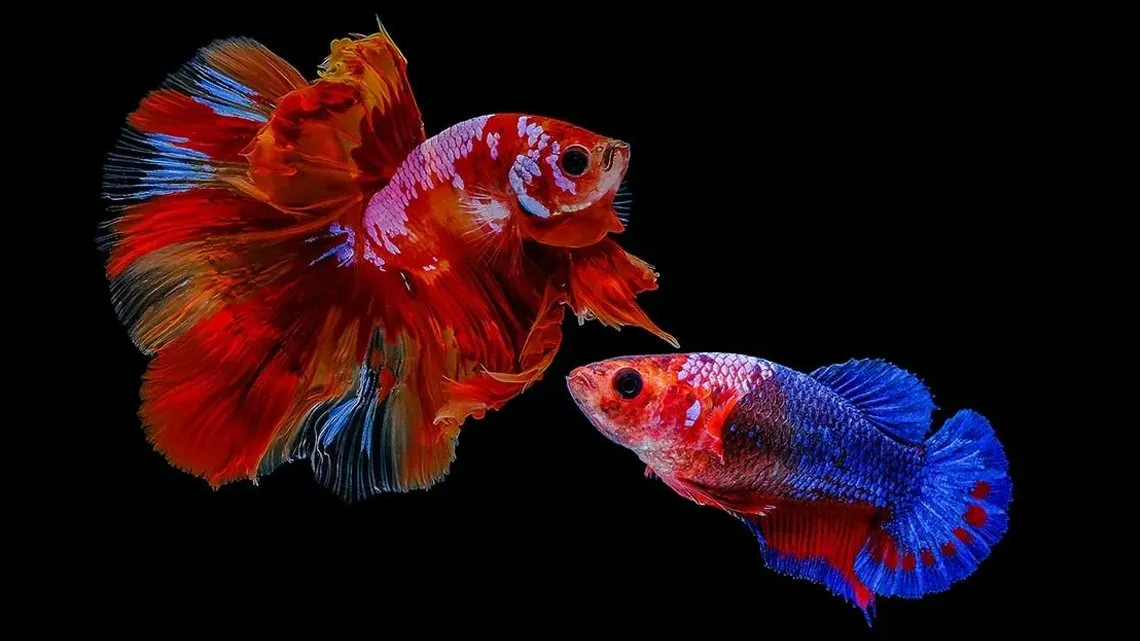The female betta fish can be referred to as a brood or breeding fish. They can be distinguished by their more slender appearance and bellies that have rounded edges. This means that they can mate and, if the conditions are suitable, will shortly release a young fish, also known as fry.
If the female betta is mated to males, their eggs will hatch within 10-14 days, depending on the temperature of the water and other variables. The most important thing to keep in mind is that once you have identified a female fish that is pregnant, you must take extra care of her to ensure that she has a baby to her offspring. Here are some indicators that could suggest that your betta fish is pregnant:
Table of Contents
Betta fish care during pregnancy
Female betta fish breeding requires special attention when they are pregnant. If you discover that your betta fish is pregnant, you must follow a few steps to ensure the highest possible circumstances for the offspring and herself. It is important to make sure that the temperature of the water stays within 25 to 28 degrees Celsius, which is 78 or 8 degrees Fahrenheit. It is also recommended to increase the oxygen levels in the water and change 25 percent of the water every week.
This can help keep toxins from accumulating in the water, which can be harmful to the betta and her fetuses. Since female betta fish that are pregnant discharge more wastes than other fish and produce more waste, it is recommended to boost the amount of filtering in your aquarium in order to keep the water healthy. Also, you should increase the quantity of aquarium gravel to ensure that harmful bacteria don’t be able to grow there.
Ovaries swelling
Another indication that a female betta fish is pregnant is the fact that her ovaries begin to expand. This is due to hormones present in the female’s body when she is preparing to release eggs that were fertilized by a male. The ovaries will appear enlarged. Ovaries are found when you examine the belly of your female betta.
The belly will appear as it’s rounded and full due to the fact that it is with eggs waiting for release. Along with the enlarged belly, you’ll also notice that the pelvic fins of females turn opaque and cloudy. Fins can also appear to increase in size because they expand due to the increase in the size of the female betta’s reproductive organs.
The loss of coloration and the increase in energy levels
When your female betta fish lays her eggs, she’ll gradually shed her vibrant coloration and start to feel more sluggish. The fins of her fish will appear less supple and loose. This could mean that the eggs are ready to release.
If you observe that your betta’s color is becoming dull or diminished, or she appears more active than normal, there’s the possibility that she’s expecting. Alongside the color decrease, you’ll be able to notice the fact that your female betta may be more restful. This is normal because she gets ready to let her eggs go out.
Discolouration and constipation of the caudal fin
Also, look out for constipation when you are pregnant with your Betta fish. This is because the female betta fish is carrying her digestive system full of nutrients that feed her eggs. As the female’s stomach is becoming more full and is impacted, the caudal fin of her changes from its normal colour and turns a darker brown color.
The more constipated the fish becomes, the more discolored her fins will turn. The discoloration of the fins is the result of debris that accumulates within the digestive system. This could cause harm to the betta fish and to her unborn children; therefore, you must get to the bottom of the issue as quickly as you can.
The increased appetite and the rate of respiration
A final indication that the female betta fish in your tank is expecting is that she’ll be hungrier than normal, and her heart rate will rise. The female uses the extra energy to increase the amount of nutrition in her body so that she can feed her baby fry. This is the reason why your betta fish becomes hungrier than usual. Be sure to feed your betta an additional diet during her pregnancy to ensure she can get the nutrition she requires to be nourished properly, as well as her unborn children.
If your betta is expecting, you’ll also observe that her respiratory rate has increased. This means she is consuming more oxygen than normal. Make sure you increase the oxygen levels in your aquarium during this period to avoid harmful bacteria from growing within the water.











